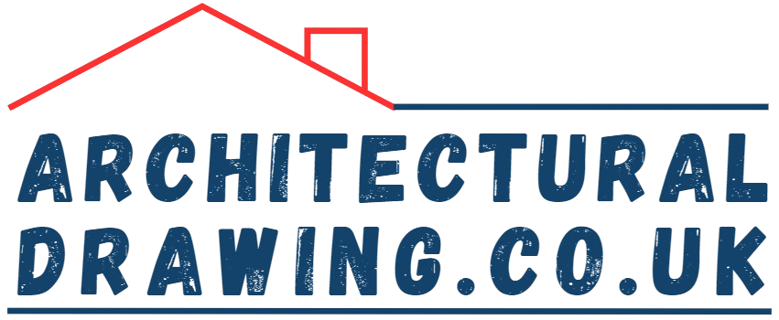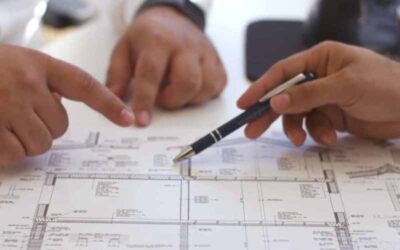In London, you will need architectural drawings for your flat renovation project in the following situations:
1. Major Layout Changes
If your renovation involves significant changes to the internal layout of the flat, such as:
- Reconfiguring rooms: Moving or removing walls, altering room sizes, or changing the purpose of rooms (e.g., converting a bedroom into a kitchen or vice versa) will require architectural drawings.
- Creating open-plan spaces: If you’re merging smaller rooms into a larger open-plan area (commonly kitchen and living spaces), architectural drawings are needed to plan the new layout and ensure compliance with regulations.
- Adding new rooms: Any plan to add new rooms, such as creating a study or additional bedroom from existing space, requires architectural drawings to show how the new layout will work with the existing structure.
2. Structural Changes (Working with a Structural Engineer)
Architectural drawings are essential when combined with structural changes. While structural drawings focus on ensuring the building’s stability, architectural drawings provide the design and layout details. Structural changes that may require both architectural and structural drawings include:
- Removing load-bearing walls.
- Altering beams and columns.
- Changes to windows and doors: Enlarging window openings, adding new doors, or relocating these elements will require architectural drawings to show how they fit within the new design.
3. Extensions or Loft Conversions
If your flat has space for an extension or a loft that can be converted (such as in a top-floor flat), you will need architectural drawings to show the proposed new space. These drawings are used to:
- Design the new space: The layout of a new room, extension, or loft, including how it integrates with the existing structure.
- Get planning permission: In some cases, an extension, roof alteration, or loft conversion will require planning permission. As part of the planning process, you will need architectural drawings to submit to the local authority for approval.
- Building Regulations compliance: Extensions and loft conversions require compliance with Building Regulations, and architectural drawings ensure the work meets legal safety, insulation, fire, and energy efficiency standards.
4. External Alterations
Architectural drawings are necessary for any renovations that involve changes to the exterior of your flat. This could include:
- Window and door alterations: Changing the size, style, or location of windows and doors will need architectural drawings to demonstrate how these alterations affect the building’s appearance.
- Balconies or roof terraces: If you’re adding a balcony or roof terrace, you will need drawings to show how the new space integrates with the existing building and to apply for planning permission.
- Façade changes: Even small changes to the external façade, such as new cladding, painting, or adding decorative features, may require architectural drawings, especially in conservation areas.
5. Planning Permission
While many internal works fall under permitted development and do not require planning permission, some flat renovations in London will need permission, especially if:
- You live in a listed building: Architectural drawings are necessary for listed building consent, even for minor changes.
- The building is in a conservation area: External alterations, extensions, and visible changes often require planning permission. Drawings will be needed as part of the application.
- The renovation affects the building’s external appearance: Any change that impacts how the building looks externally, such as window changes, balconies, or roof alterations, will likely need planning permission, and architectural drawings are required.
6. Building Regulations Compliance
For many condo renovations, compliance with Building Regulations is mandatory, and this requires architectural drawings to demonstrate how the proposed work will meet these requirements. Specific areas where Building Regulations apply include:
- Fire safety: Architectural drawings must show escape routes, fire-resistant materials, and access for firefighting in case of significant alterations.
- Energy efficiency: If you’re improving insulation, adding windows, or upgrading heating systems, architectural drawings must demonstrate that the new work meets energy efficiency standards.
- Soundproofing: In a condo, particularly in London where apartments are often stacked or side-by-side, Building Regulations mandate soundproofing between properties. Architectural drawings can illustrate how sound insulation will be incorporated.
- Accessibility: If you’re making your condo more accessible (for example, adding ramps or modifying doorways), architectural drawings will show how the design will meet accessibility standards.
7. Listed Building Consent
If your condo is part of a listed building, even small internal changes may require listed building consent. Architectural drawings are essential in this process because they help demonstrate that:
- The historic character of the building is preserved.
- The design is sympathetic to the original structure.
For listed buildings, architectural drawings must often be detailed and precise to ensure that your renovation respects the architectural and historical significance of the property.
8. Conservation Area Considerations
If your condo is in a conservation area, special rules apply to changes that affect the external appearance of the building. In these cases, architectural drawings are needed to show:
- How your renovation fits within the area’s character.
- That the design respects the aesthetic of surrounding buildings.
Architectural drawings are often submitted to local councils to obtain approval before any work can begin.
9. Party Wall Considerations
When your renovation impacts shared structures, such as party walls (walls shared with neighboring units), a party wall agreement may be required. While not always necessary, architectural drawings can be part of the documentation used to clarify the scope of the project to neighboring owners or surveyors, especially if it involves:
- Cutting into a party wall.
- Altering floors or ceilings shared with neighbors.
10. Interior Design and Space Planning
Even for more cosmetic or layout-focused renovations that don’t involve structural changes, architectural drawings can be very useful. They help with:
- Space planning: Determining how new furniture, appliances, and fixtures will fit into your space.
- Custom designs: If you’re planning custom-built furniture, cabinetry, or storage solutions, architectural drawings are crucial to designing these elements accurately.
- Detailed finishes: Architectural drawings can show finer details such as lighting plans, electrical layouts, and finishes like flooring, paint colors, and materials.
11. Freeholder or Leaseholder Consent
In London, if you are a leaseholder, the freeholder (who owns the building) or a managing agent may need to approve your renovation plans. This is especially true for any structural work, but even internal alterations may require their consent. Architectural drawings are often requested to:
- Ensure the proposed work won’t negatively affect the building.
- Show how the renovations will impact shared areas or neighboring units.
In summary
Architectural drawings are required for your condo renovation in London whenever you’re making significant layout changes, structural alterations, extensions, or external modifications.
They are also crucial for planning permission, Building Regulations approval, freeholder consent, and projects in listed buildings or conservation areas. Even for less extensive projects, architectural drawings can help visualize and plan the space efficiently.

